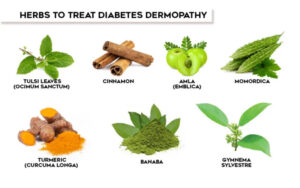Fruits have been celebrated for centuries as nature’s sweetest and healthiest offerings. Packed with essential nutrients, antioxidants, and flavors that vary from tangy to sweet, fruits are a cornerstone of a balanced diet. But did you know there are optimal ways to enjoy each fruit to maximize both their flavor and nutritional value? In this guide, we’ll explore 15 popular fruits, sharing tips on the correct way to eat them while highlighting their incredible health benefits. Whether you’re snacking, juicing, or experimenting with recipes, these insights will help you appreciate the art of fruit consumption like never before!
Correct Way to Eat 15 Popular Fruits
Apples
How to Eat: Wash thoroughly and eat the skin for maximum fiber. Slice them up or eat them whole. Pair with peanut butter for a delicious snack.
Nutritional Benefits: Rich in fiber, which aids digestion, and high in vitamin C for a strong immune system. Apples also provide antioxidants like quercetin.
Bananas
How to Eat: Peel and enjoy as is! They blend well in smoothies or can be sliced over cereal or yogurt for a quick breakfast.
Nutritional Benefits: Packed with potassium, which helps regulate blood pressure, and carbohydrates for energy. Bananas also contain vitamin B6, which supports brain health.
Oranges
How to Eat: Peel the skin and separate the segments. For juicing, roll the orange on a flat surface to maximize juice extraction.
Nutritional Benefits: A fantastic source of vitamin C, boosting immunity and improving skin health. Oranges also provide hydration and dietary fiber.
Mangoes
How to Eat: Slice along the pit, score the flesh in a grid pattern, and flip the skin outward for easy access. Enjoy fresh or in desserts.
Nutritional Benefits: High in vitamin A for good vision and vitamin C for immune health. Mangoes also contain enzymes that aid digestion.
Pineapples
How to Eat: Remove the tough skin and cut into rings or chunks. Add a dash of chili powder for a tropical twist.
Nutritional Benefits: Rich in bromelain, an enzyme that helps with digestion, and loaded with vitamin C. Pineapples also provide manganese, important for bone health.
Watermelon
How to Eat: Slice into wedges or cubes. Eat fresh or blend into juice. Sprinkle with lime juice for an extra zing.
Nutritional Benefits: Extremely hydrating due to its high water content. It’s also a source of lycopene, a powerful antioxidant.
Avocado
How to Eat: Slice in half, remove the pit, and scoop the flesh with a spoon. Great on toast, in salads, or as guacamole.
Nutritional Benefits: A rich source of healthy monounsaturated fats that support heart health. Avocados also provide potassium and vitamin E.
Strawberries
How to Eat: Wash and remove the leafy tops. Eat whole or slice them into desserts. Dip in dark chocolate for a special treat.
Nutritional Benefits: High in antioxidants like vitamin C and flavonoids, which promote healthy skin and a strong immune system. Strawberries are also low in calories.
Blueberries
How to Eat: Rinse under cold water and eat by the handful. Perfect in pancakes, muffins, or oatmeal.
Nutritional Benefits: Loaded with antioxidants that support brain health and combat inflammation. They’re also rich in vitamin K and fiber.
Grapes
How to Eat: Wash thoroughly and eat whole. Keep them frozen for a refreshing snack.
Nutritional Benefits: Contain polyphenols, which support heart health, and are a good source of vitamins C and K.
Kiwis
How to Eat: Cut in half and scoop out the flesh with a spoon. The skin is edible and full of fiber if you’re adventurous.
Nutritional Benefits: An excellent source of vitamin C, aiding immunity, and high in fiber for digestion. Kiwis also support healthy skin.
Papayas
How to Eat: Halve and scoop out the seeds. Slice the flesh or enjoy it with a squeeze of lime for flavor.
Nutritional Benefits: High in vitamin C and the digestive enzyme papain, which aids in protein digestion. Papayas are also rich in vitamin A.
Pomegranates
How to Eat: Cut into quarters and gently tap the back with a spoon to release the seeds. Enjoy directly or add to salads.
Nutritional Benefits: Packed with antioxidants, particularly punicalagins, which support heart health. They’re also a good source of dietary fiber.
Coconut
How to Eat: Crack open and enjoy the water. Scoop out the flesh to eat fresh or shred it for cooking.
Nutritional Benefits: Provides healthy fats and electrolytes. Coconut water is hydrating and a great source of potassium.
Cherries
How to Eat: Wash and enjoy whole, but beware of the pit! They’re fantastic in pies or as a topping for ice cream.
Nutritional Benefits: Contain anthocyanins, which reduce inflammation, and melatonin, which supports better sleep. Cherries are also rich in vitamin C.
Eating fruits not only delights the taste buds but also nourishes the body. Enjoy these methods and benefits to get the most out of your fruity favorites! Let me know if you’d like to explore even more fruits! 🍓🍍🍒

